Which Pool Floor Type?
An important question or discussion point that we have with homeowners building their own swimming pool is about the pool floor material, between the vinyl liner and the earth. A good pool floor base will resist divots or shifting and cracking. They also make liner replacements easier by reducing floor prep.
There are three types of pool bottom materials that can be used for in-ground vinyl pool construction: Pre-Mix, Vermiculite and a Sand Mix.
Pre-Mix Vermiculite Pool Floor
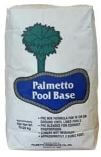
The most common and also the most expensive pool bottom is a Pre-Mixed Vermiculite, sold as Pool Base or Pool Mix. This is a ready-mixed pool floor product; no mixing required, just add water. This is the type of pool bottom most commonly used by pool installers.
Pre-mix vermiculite is easy on the pool liner; it is firm but has a soft texture to it. It can also prevent underground water issues from occurring under the liner. Pool Base or Pool Mix is one of the easiest pool floors to apply, and forms a hard and permanent pool bottom. $$$$
Vermiculite & Cement Pool Floor

The next most common pool bottom is un-mixed Vermiculite. The difference between vermiculite and pre-mixed vermiculite is that pre-mix is already mixed with the Portland cement. To make your our pool mix pool bottom, you can mix two bags of medium grade Vermiculite to 1 bag of Portland cement and then add water to the same ratio and consistency mentioned above.
This is less expensive than the pre-mixed but more work with the (careful) mixing. If you maintain a consistent mix, making your own pool base mix will give the same result as using the pre-mixed pool floor material. $$$
Sand & Cement Pool Floor
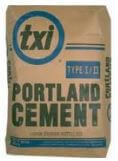
The next is a sand and cement mix. You can get a load of clean sand or a “washed” sand delivered and mix that with a Portland cement. This is the much cheaper alternative and always available in all areas. This can either be mixed in a mixer or just in a wheelbarrow as water is not used in the mixing.
The mix is four parts masonry sand and one part Portland cement. This mix is put on the walls and floor of the pool dry and after an area is complete then mist it with a garden hose and it will harden up. It is a good idea to do a large section and then mist it before you continue.
A sand and cement pool floor tends to be a little harder and more abrasive on the liner (than using a vermiculite mix) but is still a great pool floor option. It is probably the most durable pool bottom, harder than vermiculite. The level of physical labor is higher with a sand mix, because the mix is so much heavier. $$
Other Pool Floor Options
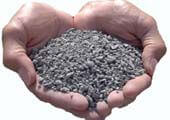

Other areas of the country have different options that can be also be used. I built pools is Massachusetts, where we used a lot of stone dust, which was a gray crushed powdery stone, also called crush-n-run in some areas. Stone dust works well and with a little water, trowels on just like concrete to form a great pool bottom. Anything will work as long as you can compact it, trowel it smooth and it’s not too abrasive for the pool liner.

However, masonry sand, or other course, graded sands or stone dust mix are used successfully for many DIY pool projects. Using just sand can save a lot of money, possibly as much as $1,000 on your DIY pool construction project, but it does have its drawbacks. Masonry sand can also be used as a pool floor material, but the soft sand can become irregular over time, and pebbles can work their way to the surface, harming the liner. If there are underground water table issues, expansive soils or poor drainage, water can more easily come to rest under the liner, and if the liner begins to leak, the sand won’t stop or slow the leak, like a proper pool mix bottom will.
How Do I Decide Which Pool Floor Material to Use?
Your floor choice should be based on availability and ground conditions. Wet, expansive soils or areas with a high water table are better off with a Vermiculite pool base. Rocky, dry soils require a thicker base, and I would recommend using a sand and cement pool floor mix for these conditions.
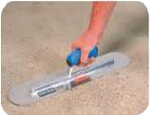
In some areas of the country Pre-Mix and Vermiculite are not as easily found, and shipment of 60 bags of pre-mix can really add to the cost of your pool floor. In this case, a pool base of sand and cement is usually the best choice.
If you are trying to save money on your pool project and have dry soils, a low water table and good drainage around the pool, a stone dust or masonry sand floor can be used. Using a printed liner can help to hide some floor irregularities that are common with sand bottoms.
How to Apply a Pool Bottom
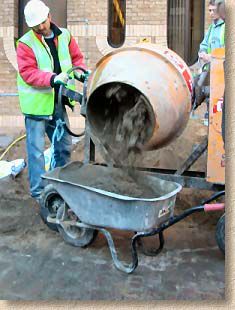
All the products I’ve spoken of are installed the same way other than the mixing. To mix a Vermiculite pool bottom you will need a large paddle mixer, or a cement mixer like the one shown on the right. You will also need a water supply available.
You’ll need a few trowels: a wood float type of trowel and also a steel trowel with rounded edges. The wood trowel is used to pack the material in place and the steel trowel to do the finish work, or final troweling. When doing the finish troweling, you also use the wood float to to support yourself, while troweling with your other hand.
With a sand and cement floor, a large wheelbarrow or mixing tub can be used to mix it manually before applying it dry to the pool floor. Stone dust or sand floors do not need to be mixed. All materials are usually brought into the pool by wheelbarrow, or the wheelbarrow is dumped over the pool edge to areas being worked on. Work one area or section at a time, and trowel the area smooth quickly.
Have all pool floor materials delivered as close to the pool as possible to reduce workload.
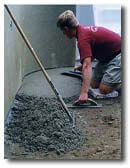
The amount of water added to your pool mix varies depending on temperature. The warmer the outside air is, the more water needed. I suggest to start out with two bags of pre-mix in your mixer with 2.5-5 gallon buckets of water, or about 12 gallons. Mix to an oatmeal consistency, and keep each batch the same in terms of mix and moisture content.
If it seems to be too dry, you can add more water. If it’s too wet, let it dry out for a few minutes before you apply it to the pool bottom. Once you get the right consistency, repeat the recipe carefully for each new batch.
Your pool floor material should be about 2 inches thick and troweled in place to the string lines you have set in the pool to mark the slope and the deep-end walls. On the angled, deep-end walls you start adding material at the bottom and work your way up the wall.
The top height of the main drain body itself should be level with your finished pool bottom. The entire drain and screw holes should be covered with duct tape while you trowel around the main drain pots. Make sure that the main drains are secure and level before you trowel.
After all angled walls are done go to the hopper pad, then your deep to shallow long slope and work your way up to the flat shallow floor. Working backward, trowel smooth any imperfections until you are able to exit via the shallow-end steps.
Future Repairs to Your Pool Bottom
When you replace your liner it’s a good time to check your floor for any necessary repairs. Cracking, divots, bumps — any imperfections in the floor at all should be patched. You do not necessarily need to use the same material as you originally used for your pool floor bottom. For small cracks, holes and divots in a pool base floor, you can patch with sand and cement mix or for very small repairs use hydraulic cement which comes in a bucket already mixed. You can of course, use the same material as was used initially for your pool floor.
I hope that answers all of your questions about pool base on vinyl liner pools. We are available to handle any questions you have about your in-ground pool project.

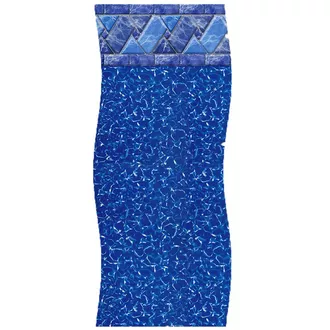
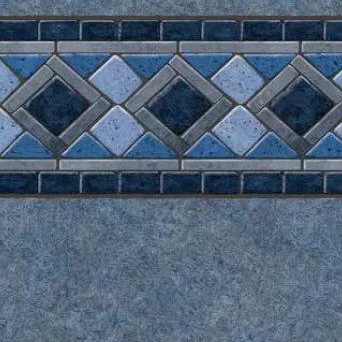
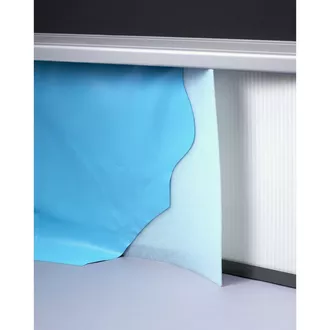
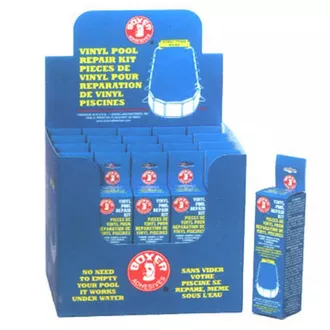
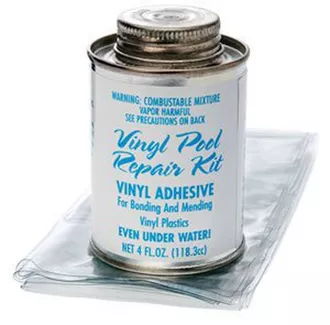
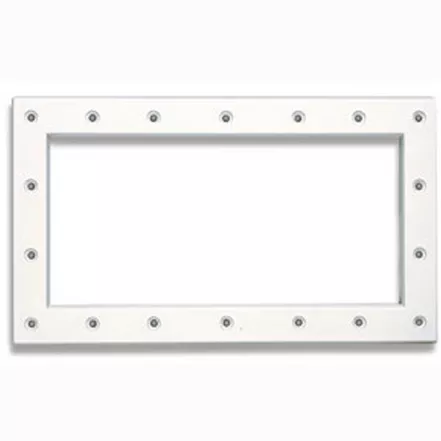
Hello I live in Tampa Florida, I have the soil is sand. What is the best type of flooring to use for the pool floor. I also want to use a professional to do this part as I will be doing this pool by myself. I don’t know if I have the skill to tackle this part. How do I find a contractor?
Hi Rudy, the best flooring is reinforced concrete, and you can hire a concrete company. The next best is a sand/portland cement mix, and you can hire day laborers. Next best is vermiculite/portland cement mix, and you can also hire day laborers, or a concrete company. Next best (or worst) is a sand bottom, and you can hire again, day laborers that are good with a trowel, or a concrete company.
I’m building our first in ground pool and at the point where I’m hiring masons for the pool bottom (sand / Portland mix). The mason want me to install metal screen wire like used behind faux stone on the walls of hopper. Has anyone hear of this? Necessary or not? In TN with very stable hard dirt. Thanks
Hi Jay, I would do it for the added strength. It may not be necessary, but then again, it can avoid some problems with the floor cracking, from shifting soils, high water table or tree roots.
Is Pre-mixed vermiculite ok for NJ state , or should I ask for cement on the bottom of my pool?
Hi Zandra, yes vermiculite is used often in NJ. Except if you have a high water table, or close the the shore, then cement would be better in a wetter soil condition.
Greetings,
Can a vermiculite or cement/sand floor be poured before the pool construction is started? If so, how far out from the edge of the wall should it be poured? I’m working on a slightly sloped lava cap(rock) base, so digging into the ground is very difficult. A cement pad is the easiest way to level the area.
Thanks
Jerome, I suppose you could do that, I would lay it about 3 ft wider than the shape of the pool, erect the pool walls, drill anchors to secure the kickers, and then pour the concrete collar around the outside of the walls, then over top of a concrete base, inside the pool walls, lay another 1-2″ of vermiculite, to cover the joint between the walls and floor.
How long can I leave my sand/cement pool bottom exposed while I am waiting to receive my pool liner. This 4 sand to 1 Portland cement will get hard so I am thinking that it will not be an issue
HI Duane, hard to say, the concern is heavy rain. If heavy enough, it could cause problems. You may want to cover the floor with tarps in the event of heavy rain, and have a small pump at the ready to pump out the deep end. If you have a high water table, that could be another concern, water may enter under the walls, or weep/seep thru the side walls. You never know, probably nothing will happen, but you never know… you know?
I have drainage tile around the pool bottom outside with lots of stone to daylight. I did a sample mix of 4 to 1 and it got very hard. I had thought about cover up and pumping out any standing water if I needed to. Yes there is all those unforeseen problems that do bite you when least expect them. Thank you for your help.